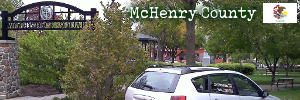















To pass on the right or not ... |
|---|

|
Gus Philpott
Woodstock Advocate
July 15, 2010
When a deputy or police officer is running "hot" (red lights and siren) down a four-lane divided highway and comes up behind a slower-moving vehicle in the left lane, it's a hard decision whether to slow down behind that driver and "make" him move over or just sail around on the right.
I watched that dilemma unfold on U.S. 14 in front of Farm & Fleet late yesterday afternoon. The squad car changed lanes to the right and went on around. It turned out well, but it could have gone the other way.
Drivers in 95-degree weather are sure to have their windows up and the air-conditioning on. More than likely, they have the radio on and/or are on the telephone. Although sirens are loud when you are standing on the sidewalk watching the squad car go by, they aren't all that loud inside a vehicle that is zipped up to keep the heat out and the cold in.
What if the driver in the left lane had suddenly noticed the squad car coming up fast behind him? Some of those drivers will stay in their lane and allow the driver of the squad car to choose his path. Some will even pull toward the left shoulder. And some drivers will panic and swerve to the right to let the squad car pass on the left. And that might just force the squad car off the road, if it has started to pass on the right.
The driver in the left lane might have been signaling a left turn well ahead of Lake Avenue, indicating to the driver of the squad car that he intended to stay to the left. However, that driver was far enough away from the left-turn lane that the correct action would have been to move out of the left lane and let the squad car pass on the left.
The driver of the squad car was traveling at a safe speed, even if over the posted speed limit, because that is permitted when emergency equipment is in use. The civilian driver appeared to be traveling about 50MPH in the 55MPH zone.
This is why it's a good idea to drive with your window cracked a little at the top, so that you can hear an approaching siren.
